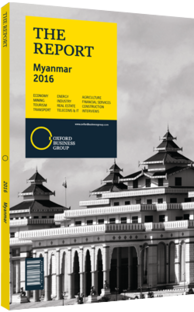Myanmars garment manufacturing segment sees growing export revenues
In the wake of the nation’s historic election in November 2015, Myanmar’s garment manufacturers have expressed cautious optimism about the potential for new business and continued growth. The industry has posted record expansion in recent years, with export revenues reaching $1.56bn in 2014, according to the Myanmar Garment Manufacturers Association (MGMA). This was up $300m on the previous year, and nearly double the $900m earned in 2012. In early 2015 the MGMA announced that exports for the year may top $2bn, despite investment in the sector levelling off over the year due to political uncertainty.
Myanmar’s garment producers face various challenges, including intensifying regional competition, rising labour costs, and regulatory and economic risks, the latter of which have contributed to slowing foreign direct investment recently. Nonetheless, these issues have not stopped the rapid expansion, nor dampened enthusiasm. “The garment industry in Myanmar produces high-quality products at a fraction of the cost of neighbouring exporters like Bangladesh and Vietnam,” Alexander Jaggard, the Myanmar country representative at Mekong Economics, a Vietnam-based consultancy, told OBG. “So long as the industry can maintain its competitiveness as labour standards and pay improve, it has the potential to grow dramatically, particularly as the industry’s main players look for alternative production bases.”
History
The industry dates back to the late 1980s, when a handful of state-owned and military-related firms partnered with Hong Kong and Korea-based manufacturers to set up production facilities in Myanmar. From around $200m in foreign sales in 1997, sector exports grew to more than $700m in 2000 and $800m in 2001, before falling to around $650m in 2002/03, according to the International Labour Organisation (ILO). In 2003 the US brought sanctions against Myanmar, and this was followed a year later by EU sanctions, pushing sector exports down to less than $300m by 2005. In the mid-2000s, however, local manufacturers began developing export relationships with new trade partners in East Asia. Over the ensuing decade this strategy paid off. The major export markets today are Japan and South Korea, each of which account for more than $250m of Myanmar-manufactured garments. With the US and EU sanctions regimes loosening since 2013, Western firms are once again looking to Myanmar.
As of mid-2015 the industry employed around 260,000 people in 210-250 factories, according to ILO estimates. These figures are still quite low compared to Myanmar’s major competitors in garment manufacturing: Bangladesh, which has 3200 garment factories, and Cambodia, with 447. Furthermore, almost all of Myanmar’s garment manufacturers operate a cut, make and package business model, with garment design and raw material input sourcing managed by the client brand. The factory, in turn, is responsible solely for assembling the material into garments.
Looking Ahead
In 2015 the MGMA published the industry’s 10-year strategy, which was drawn up with input from local factory owners, trade unions and international brands. The industry aims to improve working conditions and pay in factories, ensure the long-term stability of production lines and competitiveness of the market and, as a result, boost tax revenues, employment and GDP. The blueprint lays out objectives – from increasing access to technology and training to building a local supply chain to developing local brands – and a detailed implementation plan. The long-term objective is to turn the garment industry into “the highest revenue earning industry in Myanmar, penetrating the global market by offering high-quality, value-led products”. The MGMA forecasts considerable expansion in the garment production industry. The strategy document noted that by 2020 it has the potential to hit $8bn-10bn in exports and domestic employment of some 1m-1.5m workers.
You have reached the limit of premium articles you can view for free.
Choose from the options below to purchase print or digital editions of our Reports. You can also purchase a website subscription giving you unlimited access to all of our Reports online for 12 months.
If you have already purchased this Report or have a website subscription, please login to continue.

